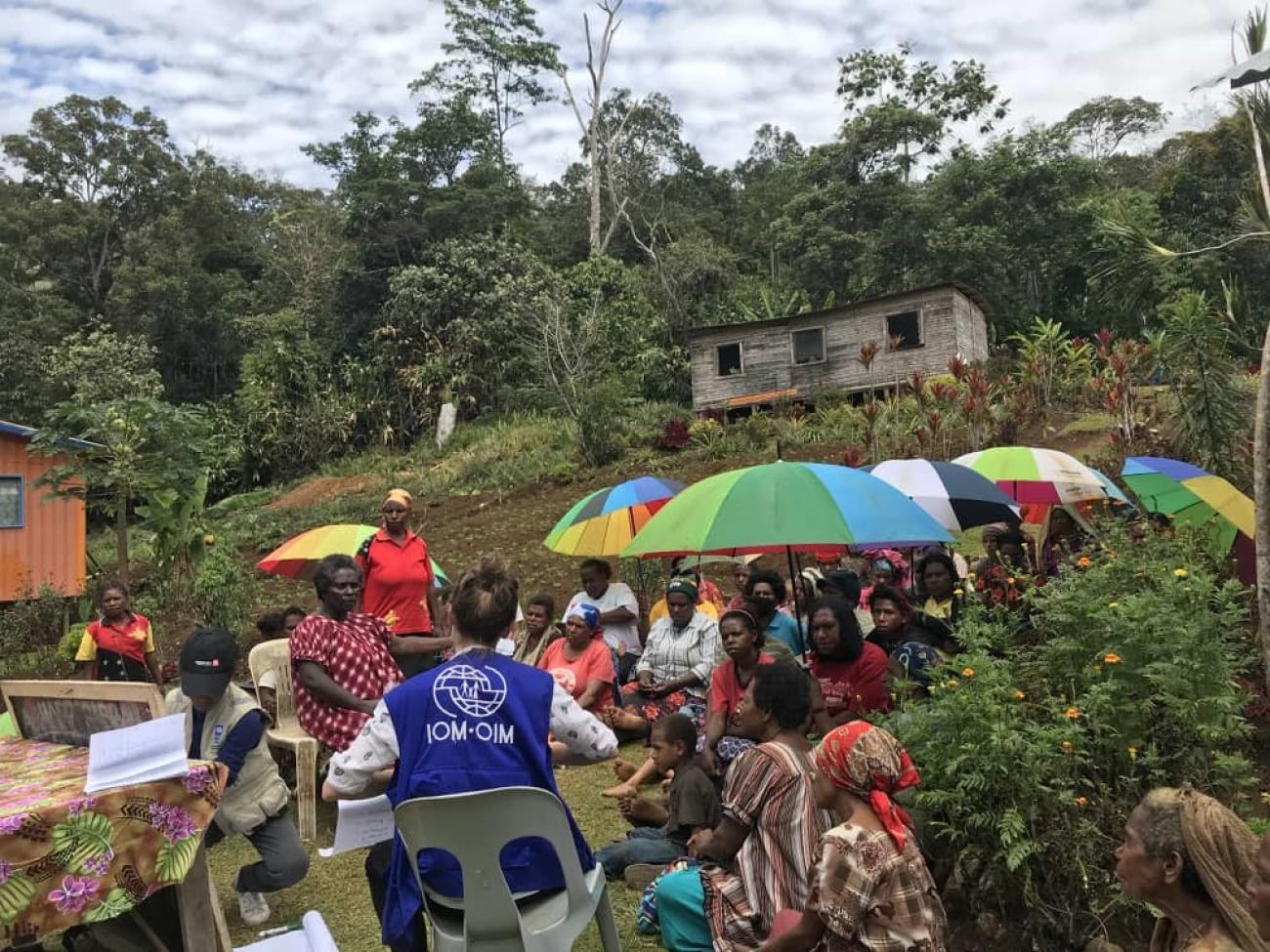When the 7.5 magnitude earthquake hit the Highlands Region of PNG in February 2018, the United Nations in support of the Government, and in coordination with the humanitarian community and the private sector, launched a humanitarian response to meet the immediate needs of the most affected communities. This response was jointly led by the United Nations Resident Coordinator’s Office (RCO), the Disaster Management Team and the National Disaster Centre. As part of this response, a Cluster System was set up to focus humanitarian action on the following seven clusters: Health, Food Security, Water, Sanitation and Hygiene, Shelter, Non-Food Items and Camp Coordination and Camp Management, Nutrition, Protection, and Education. This included activation of the displacement tracking and monitoring system in 41 locations across three provinces to identify humanitarian needs.
A Community Engagement Working Group facilitated two-way communication with humanitarian responders and affected communities. Meeting on an ad-hoc basis, the inter-cluster Community Engagement Working Group supported organisational accountability mechanisms and coordinated common services to all seven clusters. The services included a Community Response Map, common humanitarian response messages, mass communication campaigns and inter-cluster dialogues facilitating coordination of community engagement activities among clusters.
Together, staff from United Nations agencies conducted consultations with six communities across the two most affected areas, Hela and the Southern Highlands Provinces. A total of 535 community members participated in the consultations and identified similar yet slightly varying needs. The information gathered was then cross-referenced with the data from the Community Response Map to identify the most pressing needs, which the humanitarian community could prioritise.
During the consultations, community members expressed the hardships they faced during and after the earthquake. Many expressed their appreciation for the work of the United Nations in their province. A woman expressed her appreciation saying, “Thank you, UN, for giving us a listening ear. We really appreciate it, because our traditions usually neglect the views of women.”
The displacement and aftershocks caused trauma as well as misconceptions about earthquakes. Given how spread out the affected communities were, there were limited channels of communication to engage them in the humanitarian response. To provide psychosocial support, and to inform and engage communities about their needs and roles in their own recovery, the United Nations launched an information hotline with life-saving audio and text messages that guided appropriate community action.
Using data from the Community Response Map, the Community Engagement Working Group was able to produce and disseminate posters to affected communities on what an earthquake is and how to respond during and after. This proved effective in creating more resilient communities.
The Community Response Map is PNG’s online platform for accountability in the humanitarian Response (https://png.communityresponsemap.org/). It ensures the views of the affected communities are treated as paramount and provides a confidential platform to share feedback with humanitarian organisations. It also enables humanitarian responders to track the communities’ needs and perceptions of the humanitarian response. The main feedback channel for the Community Response Map developed by the United Nations was ChildFund’s 1-Tok Kaunselin helpline. A total of 1,820 cases have been recorded.
The initial community engagement into the Highlands is only the beginning of such approaches, with plans for rollouts in future disasters or emergencies in the country.



